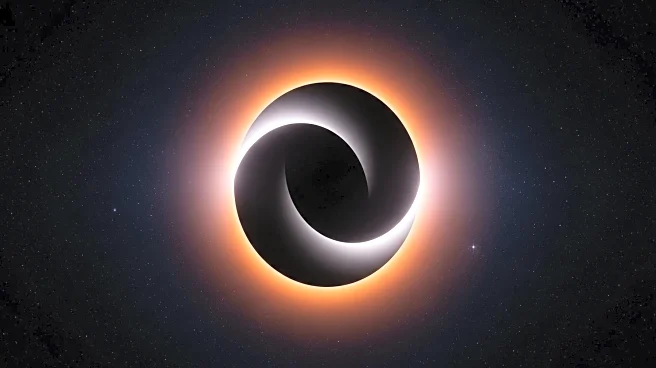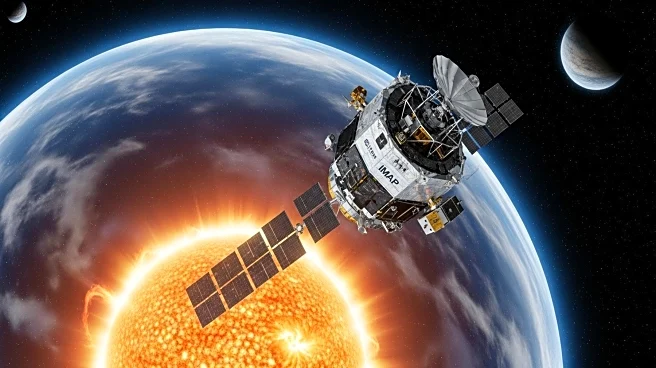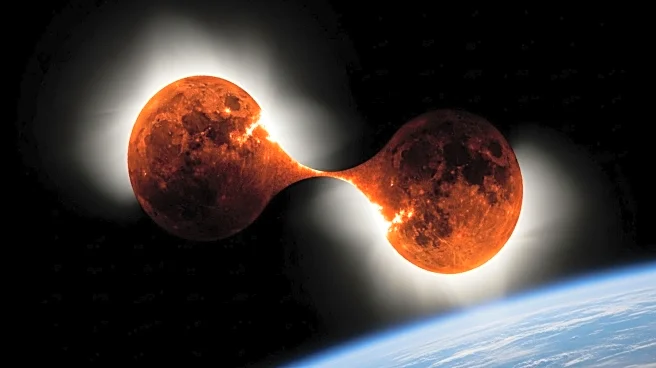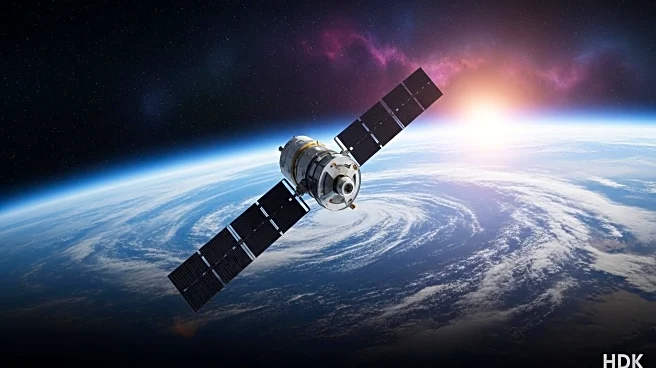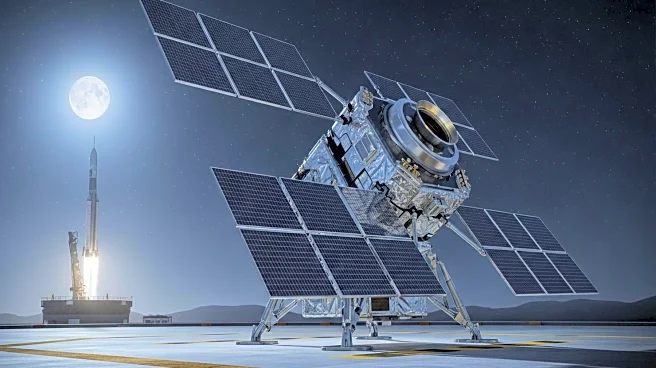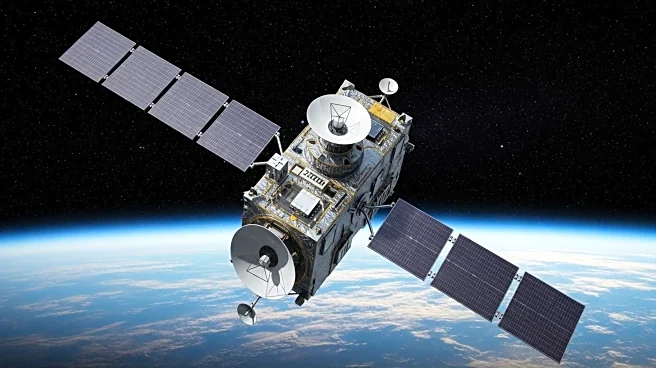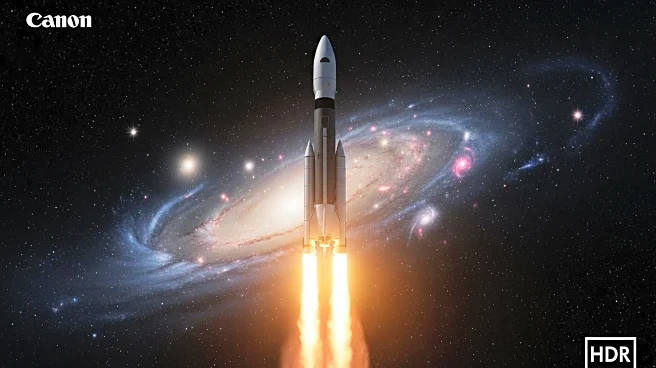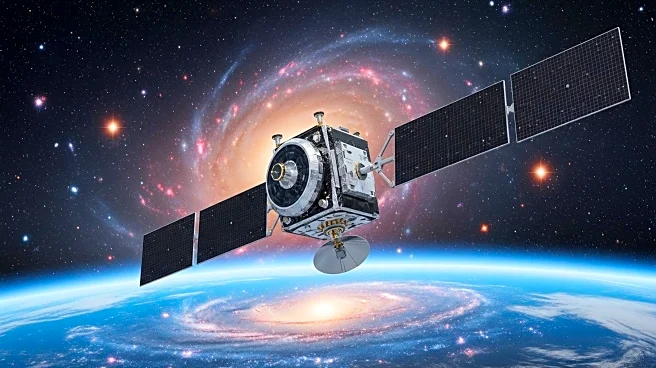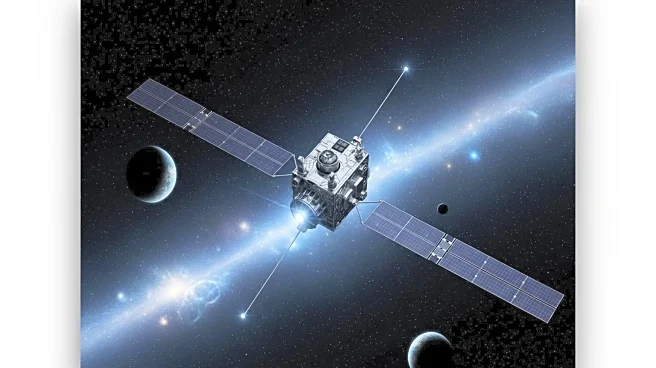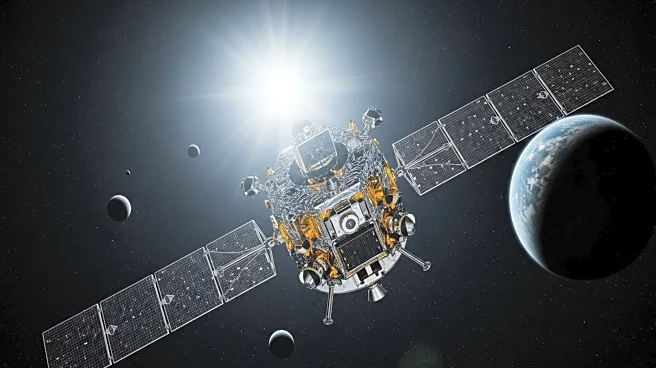What is the story about?
What's Happening?
NOAA's GOES-19 satellite captured rare footage of the moon eclipsing the sun on September 21, 2025, from space. The satellite's Compact Coronagraph-1 (CCOR-1) recorded the event, showing the moon passing between the instrument and the sun, creating a natural solar eclipse. The imagery appeared unusual due to image processing, where the corona disappeared instead of just the solar disk. The moon's path seemed crooked due to a scheduled yaw-flip maneuver of the satellite, altering its orientation and affecting the imagery.
Why It's Important?
This event marks a unique observation of a solar eclipse from space, providing valuable data for studying the sun's corona. The ability to capture such phenomena from orbit enhances the understanding of solar dynamics and the interactions between celestial bodies. The footage contributes to space weather research, aiding in the prediction and analysis of solar events that can impact satellite operations and communication systems on Earth.
What's Next?
Further analysis of the footage will help refine image processing techniques for space-based observations. Researchers may explore additional opportunities to capture natural eclipses from orbit, improving the study of solar phenomena. The data collected could inform future missions and the development of advanced instruments for observing solar activity.
AI Generated Content
Do you find this article useful?
